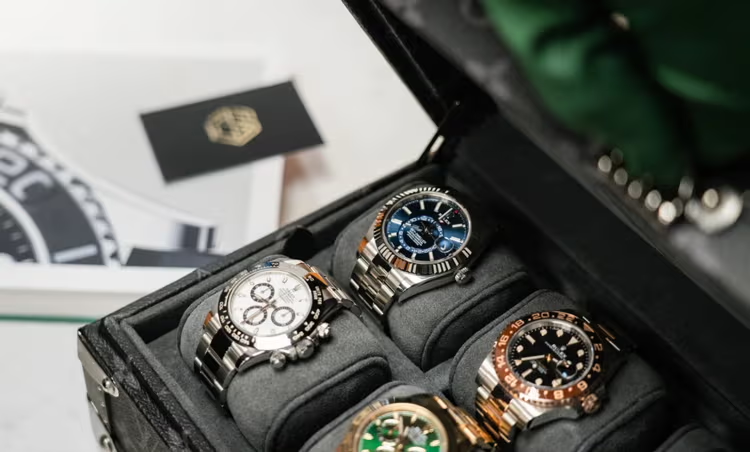The world of watchmaking is rich in tradition, innovation, and exclusivity. Over the centuries, various watch brands have emerged, leaving their unique mark on the industry. To truly understand the influence and innovation of a watch brand, it’s essential to delve into its history. By examining their past, we can uncover how these brands have shaped modern watchmaking, introducing groundbreaking technologies, pioneering designs, and setting benchmarks that have influenced both the craft and the industry at large.
In this article, we will explore how to interpret the history of renowned watch brands to understand their impact on the watchmaking industry and luxury market.
1. The Origins of a Brand: Establishing Foundations for Innovation
A brand’s origins often provide insight into its long-term goals and vision. Most luxury watchmakers began with humble beginnings but had an innate desire to push the boundaries of timekeeping technology and design. Their early decisions, from the choice of materials to the type of movements they used, often foreshadowed the innovations that would define them in the future.
Rolex: Early Innovation in Precision and Durability
- Founded in 1905 by Hans Wilsdorf, Rolex’s early focus was to create precision watches that were also elegant and durable. Their breakthrough innovation came in 1926 with the Oyster case, the world’s first waterproof wristwatch. This not only improved the functionality of watches but also set the stage for the brand’s reputation for practical luxury. From there, Rolex continued its trajectory of innovation, introducing the Perpetual movement (a self-winding mechanism) in 1931, which is still a hallmark of the brand today.
Patek Philippe: Timeless Mastery in Complications
- Founded in 1839, Patek Philippe stands as one of the oldest watch brands, and its early history is one marked by exquisite craftsmanship and innovative complications. The brand was pivotal in introducing complex features such as the split-seconds chronograph, minute repeaters, and perpetual calendars. Their pioneering work in mechanical watch movements has continued to set a standard for the highest level of horology. Patek Philippe’s reputation for producing exceptional timepieces with mechanical complexity underscores their influence on the fine watchmaking industry.
2. Key Milestones: Innovations That Changed the Game
Each significant milestone in a brand’s history is often the result of a carefully considered innovation. These milestones not only define the brand’s identity but also reveal their commitment to advancing the craft and influencing the direction of watchmaking.
Omega: Leadership in Space and Precision
- Omega’s influence on modern watchmaking can be seen in their space exploration history. In 1969, the Omega Speedmaster became the first watch worn on the moon during the Apollo 11 mission. This groundbreaking achievement not only highlighted Omega’s commitment to precision and reliability but also established the brand as a pioneer in technical advancement. Their introduction of the co-axial escapement in 1999, a movement technology developed to reduce friction, was another significant milestone that enhanced the longevity and accuracy of mechanical watches.
Audemars Piguet: The Royal Oak and the Modern Luxury Sports Watch
- In 1972, Audemars Piguet forever altered the landscape of watchmaking with the release of the Royal Oak. Designed by Gerald Genta, this watch redefined luxury by introducing the luxury sports watch—a watch that was both elegant and rugged. The stainless steel case and octagonal bezel challenged traditional notions of luxury, and it became a style icon. The Royal Oak not only revolutionized the concept of luxury sports watches but also influenced the entire industry, leading other brands to adopt similar designs and embrace materials like stainless steel in high-end timepieces.
3. Technology and Craftsmanship: How Innovation Drives a Brand’s Influence
A brand’s historical innovations in technology and craftsmanship are perhaps the clearest indicators of their impact on the industry. Watchmakers have constantly sought ways to improve accuracy, durability, and design, pushing the boundaries of what a watch can do.
Jaeger-LeCoultre: Master of Movements
- Known as the “watchmaker’s watchmaker,” Jaeger-LeCoultre has been at the forefront of innovation in watch movements. Over its long history, the brand has developed over 1,000 movements and holds over 400 patents. One of their most notable achievements was the creation of the Reverso in 1931, a watch with a reversible case that protected the face during polo matches. In more recent years, Jaeger-LeCoultre’s Master Control line has featured their own innovative in-house calibers, combining the best of traditional horology with modern technological advancements.
Breguet: Inventing the Tourbillon
- Abraham-Louis Breguet, one of the most influential watchmakers of the 18th century, introduced several innovative designs that are still used today. Among his many contributions was the tourbillon—a mechanism designed to improve the accuracy of pocket watches by compensating for gravity-induced errors in timekeeping. Breguet’s focus on scientific precision and elegant design has influenced not only other watchmakers but also the wider world of luxury craftsmanship. His invention of the tourbillon continues to be a key feature in high-end mechanical watches today.

4. Design Evolution: Changing the Aesthetic and Functional Landscape
While technical innovations are at the heart of many legendary watch brands, the design of their timepieces is equally important. Watch brands have, over the years, set the standards for elegance, durability, and innovation in design. These iconic designs are often tied to a specific period in history and reflect the evolving tastes and preferences of consumers.
Cartier: The Birth of the Modern Wristwatch
- Cartier is often credited with designing the first modern wristwatch in 1904. The Santos de Cartier was developed for Brazilian aviator Alberto Santos-Dumont, who needed a convenient way to tell time while flying. This design marked the shift from pocket watches to wristwatches and helped solidify Cartier’s place in the history of elegant timekeeping. Their continuing influence in the luxury watch world is seen in the Tank watch, which remains an iconic design that blends sophistication with modernity.
Tag Heuer: A Pioneer in Sports Watches
- Tag Heuer‘s contributions to the sports watch category are immeasurable. Their introduction of the Monaco in 1969, with its square case and chronograph functions, made waves in the watch industry. The Monaco was notably worn by actor Steve McQueen in the film Le Mans, further cementing its place in pop culture. Tag Heuer’s continuous emphasis on functional design and accuracy for motorsports and other high-energy activities demonstrates how design and performance can seamlessly integrate.
5. Global Recognition: How Legacy Brands Continue to Shape the Industry
Finally, examining a watch brand’s global recognition and reputation is essential for understanding its influence. Over the years, certain brands have come to embody the highest standards of luxury, precision, and style, and their legacy extends far beyond the world of horology.
Rolex’s Enduring Status as a Status Symbol
- Rolex’s reputation has transcended beyond timekeeping to become a cultural icon. Its history of groundbreaking innovation, such as the Oyster case and Perpetual movement, has not only shaped the watchmaking industry but also made the Rolex name synonymous with success. Rolex watches are symbols of achievement, worn by high-profile individuals across various fields. This brand has influenced both the watchmaking world and popular culture, often setting trends in luxury timepieces and investment-grade watches.
6. Conclusion: The Power of Legacy and Innovation in Shaping the Watchmaking Industry
The history of iconic watch brands like Rolex, Patek Philippe, Omega, and Audemars Piguet reveals a consistent theme: innovation and craftsmanship at the forefront of luxury timekeeping. These brands did not just follow trends; they set them, continually pushing the boundaries of what a watch can be, both in terms of functionality and design.
By exploring their histories, we can see how they have shaped the modern watchmaking industry—from introducing game-changing complications to designing timepieces that reflect the changing tastes of society. As we continue to see new advancements in technology and craftsmanship, it’s clear that the legacy of these influential brands will persist, continuously guiding the future of horology.
Understanding the history behind these prestigious names is key to recognizing their impact, not just on watchmaking, but on broader cultural and technological advancements. These brands have proven that innovation and tradition can coexist, creating timepieces that stand the test of time in both quality and relevance.





































